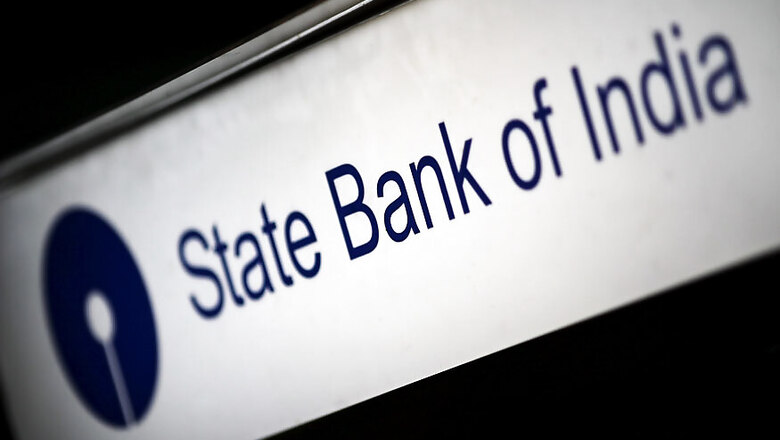
views
New Delhi: With the 2019 Lok Sabha elections underway, the BJP is making sure that the party keeps away from the issue of ballooning non-performing assets in the banking sector, something which the party had vehemently raked up during the 2014 polls.
In its 2014 election manifesto, the party had promised that it will "take necessary steps to reduce NPAs in banking sector”. However, gross NPAs (GNPAs) in the banking sector have seen a nearly four-fold increase since 2014, when the Narendra Modi-led NDA government came to power at the Centre.
According to data compiled by the RBI, system-wide GNPAs of banks have gone up from 3.8 per cent of the gross advances or Rs 2.63 lakh crore on March 31, 2014 to Rs 10.39 lakh crore or 11.2 per cent as of March 31, 2018.
The latest figures on NPAs in the banking sector have seen a significant jump from Rs 7.9 lakh crore or 9.3 per cent in the previous year, that is 2016-17, owing largely to major frauds like the PNB scam unearthed in early 2018, among others.
Among bank groups, Public Sector Banks (PSBs) were the worst-affected, the data shows.
The gross NPAs of PSBs increased from 4.4 per cent in FY14 to 14.6 per cent at the end of FY18. Gross NPAs for PSBs rose from Rs 2.27 lakh crore in FY14 to Rs 8.95 lakh crore at the end of FY18. The country’s largest lender, the State Bank of India (SBI) alone accounted for nearly Rs 2.23 lakh crore of the total GNPAs in 2018.
Same was the case for Private Banks (PVBs), which witnessed an increase from 1.8 per cent in FY14 to 4.6 per cent in FY18, significantly low compared with PSBs. The central bank credited these low GNPA ratios in PVBs to “resolute efforts on the part of PVBs to clean up their balance sheets through higher write-offs and better recoveries” in its report published in December last year.
Madan Sabnavis, chief economist at CARE Ratings, argued that the creation of NPAs took place 2010 onwards, post the financial crisis when rates were lowered and banks went ahead and lent money in a big way.
“As conditions turned adverse due to irregularities in allocation of coal, iron ore, telecom etc., projects got stalled which then got converted into restructured assets as the wisdom at the time justified such action on grounds of external factors being adverse. In a way, we camouflaged bad assets as restructured assets,” said Sabnavis.
“This went on till 2015 or so when the RBI Governor asked banks to come clean with their accounts with the asset quality review (AQR) being undertaken which led to revelation of high NPAs. Hence, while these numbers spiraled under NDA, they were created earlier and got revealed only post AQR,” Sabnavis added.
Former RBI governor Raghuram Rajan, who initiated these AQRs, while drawing a similar line had also listed ‘governance issues’ and ‘frauds’ as responsible for the NPA growth in the banking sector in his note to the Parliamentary Estimates Committee in September last year.
In his note, Rajan said he had sent a list of high-profile cases to the Prime Minister’s Office (PMO), while he was in office, urging coordinated action to bring at least one or two to book. Raman later on went to say that he was not aware of any progress made on it. Rajan resigned as the RBI governor in September 2016.
The Way Ahead
While contrary to its promise, the amount of NPAs surged under the current dispensation, Sabnavis claims that there is no evidence that more NPAs were created in the last 4-5 years and the spike was because of identification of those which were created in the past.
“In fact, it can be said that the cleaning up process happened under the NDA when the Insolvency and Bankruptcy Code (IBC) was also introduced to expedite the process. Therefore, the NDA should in a way be credited for the purging,” Sabnavis opined.
Introduced in 2016, the IBC has been instrumental in recoveries of NPAs by banks, according to the RBI report. The IBC recorded a recovery rate of 49.6 per cent in 2017-18, compared with 24.8 per cent through the SARFAESI Act, 5.4 per cent through Debt Recovery Tribunals (DRTs), and 4 per cent through Lok Adalats, RBI data showed.
The overall recoveries, however, remained just 13.7 per cent for the year.
While the recoveries are happening, the dramatic rise in NPAs has proven to be neutraliser.
Furthermore, Rajan’s note, in a sign of warning, advised the current government to refrain from setting ambitious credit targets or waiving loans, adding that credit target are sometimes achieved by abandoning appropriate due diligence, creating environment for future NPAs.
Over this, the former governor specifically mentioned MUDRA loans as well as the Kisan Credit Scheme, introduced by the NDA government, and said that these have to be examined more closely for potential credit risk.


















Comments
0 comment